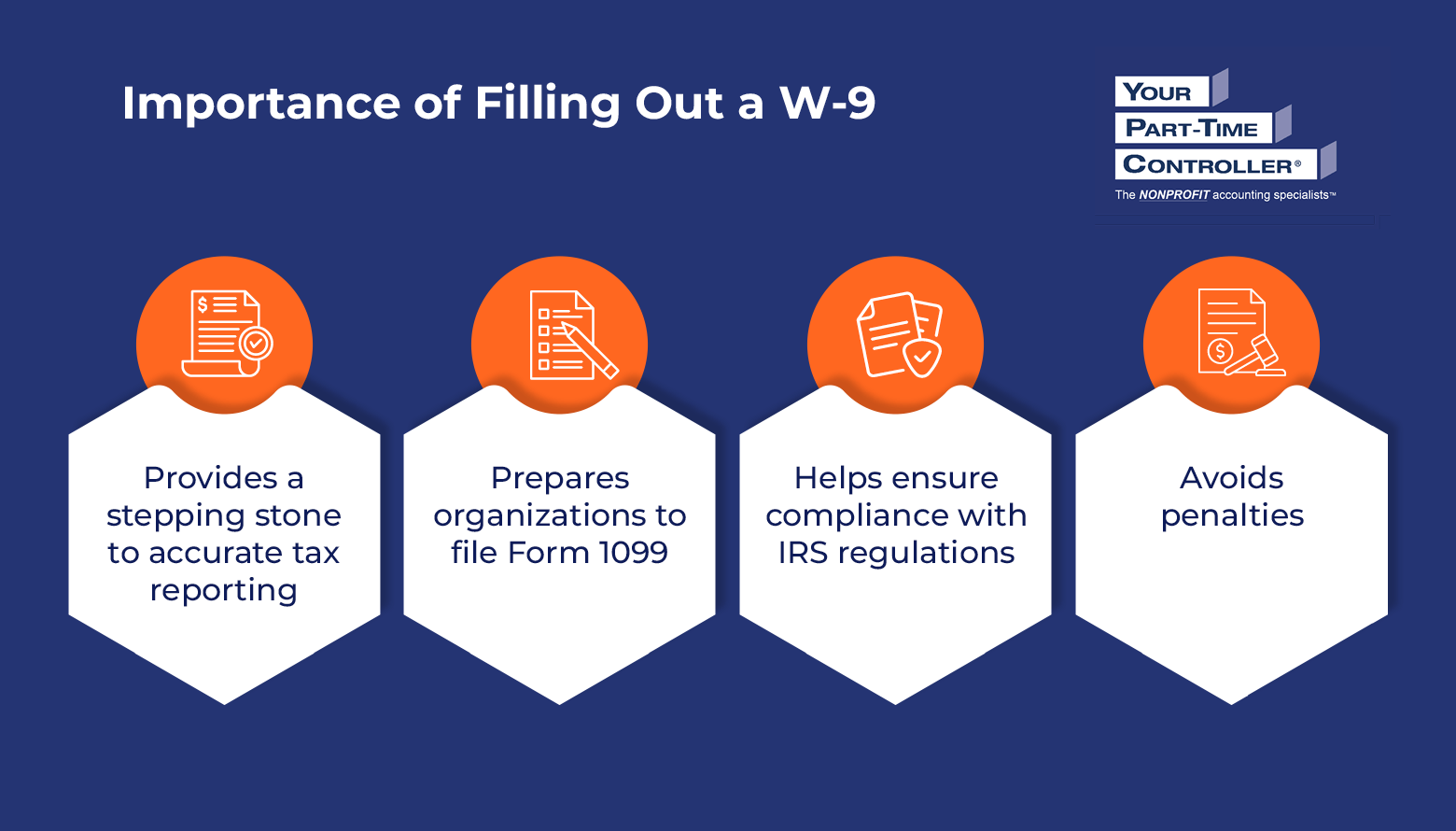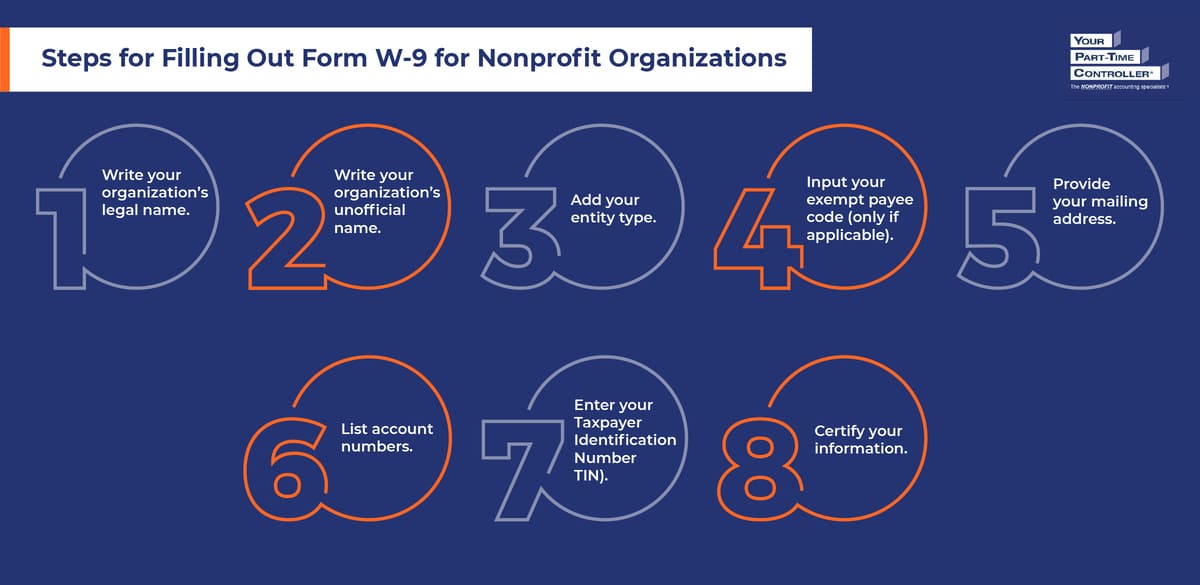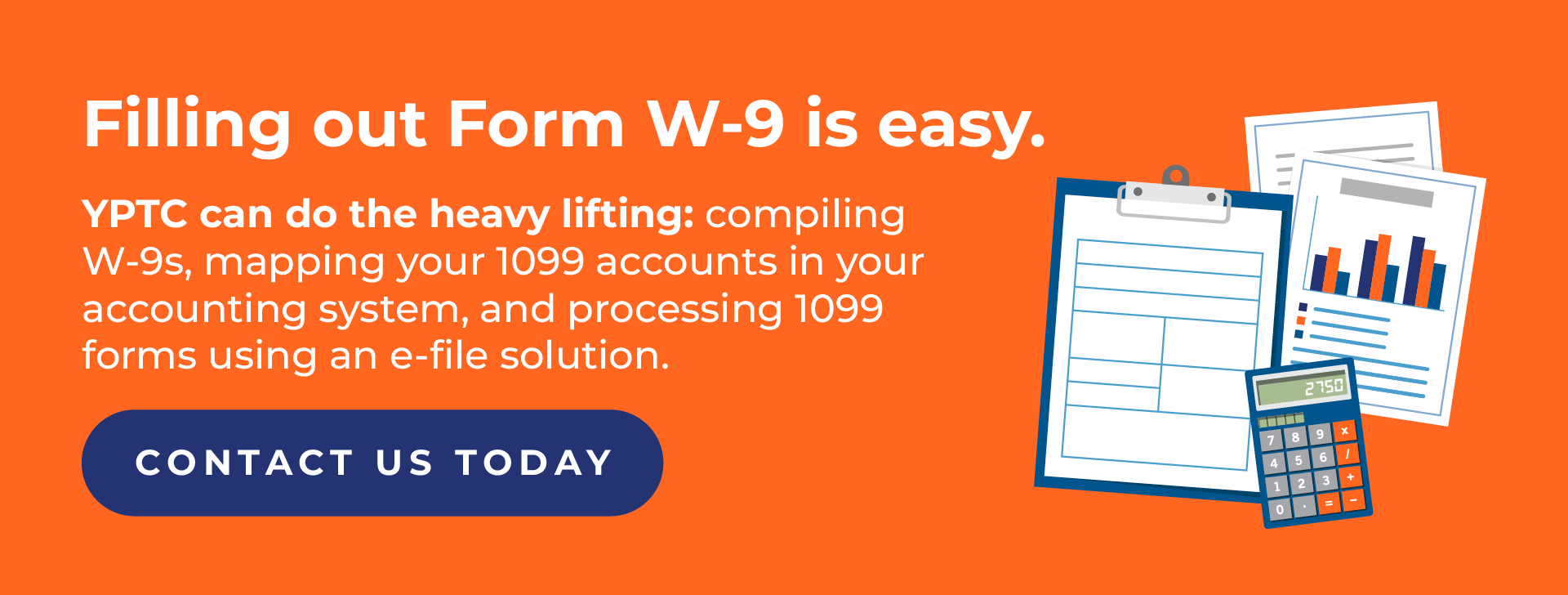How to Fill Out Form W-9 for Nonprofit Orgs: FAQs + 8 Steps
When you start a nonprofit, one of the first things you have to do is obtain your tax-exempt status. However, once you become a tax-exempt organization, it may feel like you’re constantly filling out different forms to maintain tax exemption and keep your nonprofit afloat.
Luckily, the W-9 for nonprofit organizations is a simple form to complete, allowing you to easily check another form off your to-do list. To streamline the process even further, we’ll answer the following questions:
- What Is a W-9 for Nonprofit Organizations?
- When Does My Nonprofit Have to Request or Fill Out Form W-9?
- Why Is It So Important to Fill Out a W-9?
- How Do You Fill Out Form W-9 for Nonprofit Organizations?
- How Do You Submit Form W-9?
- What If I Need Help with Other Aspects of Nonprofit Financial Management?
Once you learn the ins and outs of Form W-9, you’ll be well-equipped to fill out the form, submit it, and move on to more mission-critical tasks.
What Is a W-9 for Nonprofit Organizations?
IRS Form W-9, also known as the “Request for Taxpayer Identification Number and Certification,” is a form used to collect a contractor’s Tax Identification Number (TIN) and other necessary tax information.
The official form is six pages long, but the contractor only has to fill out the front page. The remaining five pages are instructions for completing the form. Here is what the first page looks like:
In addition to the contractor’s TIN, this form also collects information like the contractor’s:
- Name
- Type of entity
- Mailing address
Ultimately, Form W-9 provides the information the contracting organization needs to fill out Form 1099, which reports on the miscellaneous income organizations pay to contractors, freelancers, and vendors. Once the IRS receives Form 1099, it uses the TIN and name information to verify that the contractor has reported their income correctly on their tax return.
When Does My Nonprofit Have to Request or Fill Out Form W-9?
There are two possible instances in which your nonprofit would need to handle Form W-9: when you work with a contractor or act as a contractor for another organization. Here’s what your nonprofit’s role looks like in each of these scenarios:
1. You work with a contractor.
When you hire an outside vendor or contractor, you need to request a W-9 from them. You’ll gain access to information like their TIN and mailing address, which you can include (alongside the income you’ve paid them) on Form 1099 if the following conditions apply:
- You’re paying an independent party who is not your nonprofit’s employee.
- The recipient is an individual, partnership, LLC taxed as an individual or partnership, or estate.
- The individual performed services for your organization.
- You paid this individual at least $600 for their services within the calendar year.
For example, let’s say you hire a fractional CFO for part-time help with budgeting, grant management, and financial planning. If you’re working with this contractor for the first time, you should request a W-9 from them as soon as possible once your working relationship begins. That way, you can ensure you have all the information you need to properly report your transactions and avoid scrambling for these details when Form 1099 is due.
If you’ve already worked with this contractor before, you can continue using the original W-9 you requested from them. However, it’s good practice to periodically verify with your vendors and contractors that the information they’ve provided is still accurate. For example, if their address or TIN changes, you’ll need to request a new W-9.
2. You act as a contractor for another organization.
Although it’s less common, there may be some situations in which your nonprofit takes on the role of a contractor. For example, if you run a well-established healthcare organization, you may provide paid consulting services to a newly founded healthcare nonprofit to get them up and running and pass on industry knowledge.
In this case, the new nonprofit would request a W-9 from your organization (ideally at the beginning of the working relationship), and you would fill it out and promptly return it so they can issue you a 1099.
No matter which side of the contractual relationship your nonprofit is on, you should be familiar with filling out Form W-9 to expedite the process and ensure both parties have all the information they need.
Why Is It So Important to Fill Out a W-9?
While Form W-9 itself never reaches the IRS, it’s a stepping stone to accurate tax reporting. This form is necessary to prepare organizations to file Form 1099 and stay compliant with IRS regulations.
If an organization fails to file Form 1099 correctly or on time (the deadline is January 31), it may receive penalties from the IRS, depending on how late the forms are filed.
If your organization won’t be able to file Form 1099 on time, you may be able to request an extension by submitting Form 8809 to the IRS. However, the IRS does not automatically grant extensions—which is why filling out Form W-9 and Form 1099 promptly is so important!
 How Do You Fill Out Form W-9 for Nonprofit Organizations?
How Do You Fill Out Form W-9 for Nonprofit Organizations?
To get started with the W-9 process, locate the appropriate form on the IRS website. Then, follow these steps.
1. Write your organization’s legal name.
In Box 1, write your organization’s legal or official name. This should be the exact name you used on Form 1023, Form 1024, or Form 1024A to become a tax-exempt organization, your articles of incorporation, and your Form 990.
2. Write your organization’s unofficial name.
You and your constituents may use an unofficial or assumed name to refer to your nonprofit that’s different from your organization’s legal name. If that’s the case, use Box 2 to enter your organization’s unofficial name.
For example, your organization’s legal name may be “Save the Trees, Please Inc.” while your unofficial name would simply be “Save the Trees, Please.” In this case, you would write “Save the Trees, Please Inc.” in Box 1 and “Save the Trees, Please” in Box 2.
3. Add your entity type.
Box 3 is where you’ll include your nonprofit’s federal tax classification or entity type. The options for this section include:
- Individual/sole proprietor
- C Corporation
- S Corporation
- Partnership
- Trust/estate
- Limited liability company (LLC) with C corporation, S corporation, or partnership tax classification
- Other
If your nonprofit is a corporation, you can check the “C Corporation” box. Alternatively, any nonprofit can check “Other” and mark their organization as a nonprofit, along with the type of tax exemption their organization holds, such as 501(c)(3). If you’re unsure about your organization’s classification, reach out to your lawyer or accountant with any questions.
4. Input your exempt payee code (only if applicable).
The form’s instructions indicate which types of payments require you to input an exempt payee code, such as:
- Interest and dividend payments
- Broker transactions
- Barter exchange transactions and patronage dividends
- Payments of over $600, which are required to be reported, and direct sales over $5,000
- Payments made in settlement of payment card or third-party network transactions
Most nonprofits will leave Box 4 blank, which lets taxpayers claim an exemption from backup withholding. However, you should double-check the requirements just in case.
5. Provide your mailing address.
In Box 5, provide your organization’s street number, street name, and apartment or suite number (if applicable). Then, in Box 6, you’ll complete your mailing address with your city, state, and ZIP code.
There is also a box next to these two boxes that gives you the option to enter the requester’s name and address. While optional, filling out this information allows you to keep track of the organizations that have access to your TIN, verify the entity or individual requesting the form, and ensure you can easily get in contact with them via mail if necessary.
6. List account numbers.
You may use Box 7 to list account numbers that may help the requesting entity identify you. This box is optional, so if you don’t have an account number with the requester or they haven’t asked you to include one, feel free to leave it blank.
7. Enter your Taxpayer Identification Number (TIN).
While individual contractors use their Social Security numbers as their Taxpayer Identification Numbers (TIN), all registered nonprofit organizations should have unique employer identification numbers (EINs) issued by the IRS. Include this information in the section labeled “Part I,” and leave the Social Security box empty.
If you still have to apply for an EIN or are in the process of doing so, make sure to file Form SS-4 as soon as possible. Then, write “Applied For” in the TIN box. From this point, you’ll have 60 days to provide your EIN to the requesting organization.
8. Certify your information.
Lastly, you’ll sign and date the form in the “Part II” section to certify that:
- Your TIN is correctly stated.
- You are not subject to backup withholding, which would require you to send a portion of your payment to the IRS.
- You are a U.S. citizen or other U.S. person.
- Any Foreign Account Tax Compliance Act (FATCA) codes you’ve entered are correct.
Double-check that all the information you’ve included is correct so you can confidently sign and submit the form.
How Do You Submit Form W-9?
Determining your next steps for submitting Form W-9 depends on whether you’re requesting the form or receiving it from another entity:
- If your organization requests the form from a contractor, make sure it’s clear whether you’d like to receive the form via mail, email, fax, or an online document service. Once you get the form back, you’re all set to complete Form 1099 and return it to the contractor by the January 31st deadline. In addition to the contractor’s name, address, tax classification, and TIN, you’ll also need to pull information from your records, including the category of payments you paid to the contractor, tax withholding information, and their total non-employee compensation.
- If a contracting organization requests the form from your organization, it’s your responsibility to fill out the W-9 and return it to the requester as soon as possible. Unless you have to apply for an EIN, it shouldn’t take you too long to fill out this form. Aim to get it back to the contracting organization within a week of their request.
Since these forms contain sensitive information, remember to keep them secure in your accounting system. Some software will also help to keep all of your forms organized so you can easily access and reference them as needed.
What If I Need Help with Other Aspects of Nonprofit Financial Management?
Although the W-9 is simple and straightforward to complete, it’s essential that you take the time to ensure all the information you receive or enter is accurate. Following the steps in this guide, you’ll do a thorough job and include everything you need for the W-9/1099 process.
If you require any other financial management assistance, the accounting specialists at YPTC are here to help. That way, you can reserve your time for more mission-critical work and be confident you’re managing your finances correctly. Contact us today to learn more about how we can tackle your organization’s accounting or bookkeeping needs.
If your nonprofit wants to learn more about nonprofit accounting and finances, check out these additional resources:
- Your Step-by-Step Guide to the 1099 IRS Form. Once you’ve collected Form W-9, it’s time to fill out Form 1099. Learn how in this step-by-step guide.
- Nonprofit Accounting: What Charitable Orgs Need to Know. Want to learn the ins and outs of nonprofit accounting? Look no further than this ultimate guide.
- Demystifying Nonprofit Financial Statements: Complete Guide. Do you know the four main nonprofit financial statements your organization should compile? Dive into these important documents today.

Jennifer Alleva
Jennifer Alleva is the Chief Executive Officer at Your Part-Time Controller, LLC (YPTC), a leading provider of nonprofit accounting services and #65 on Accounting Today’s list of Top 100 accounting firms. Jennifer brings over three decades of expertise in accounting and leadership to her role as CEO of YPTC.
When Jennifer joined YPTC in 2003, the firm consisted of just over 10 staff members. Since then, she has helped grow YPTC into one of the fastest-growing accounting firms in the country.
Jennifer’s accomplishments include her tenure as an adjunct professor at the University of Pennsylvania Fels Institute, her frequent speaking engagements on nonprofit financial management issues, her role as the founder of the Women in Nonprofit Leadership Conference in Philadelphia, and her launch of the Mission Business Podcast in 2021, which spotlights professionals and narratives from the nonprofit sector.













